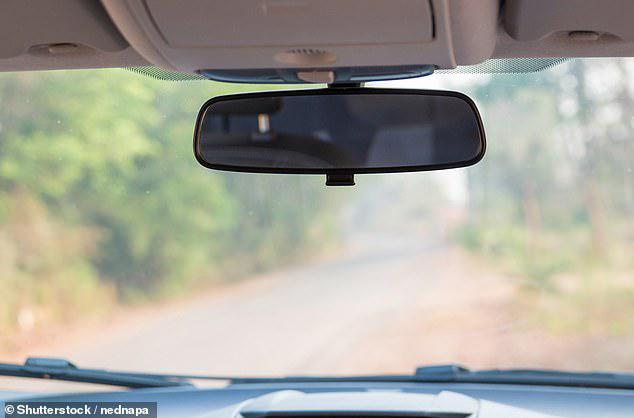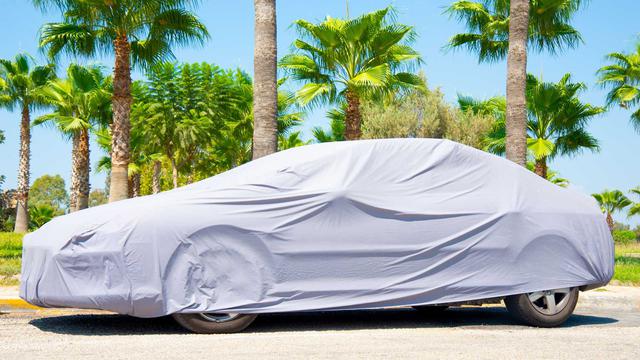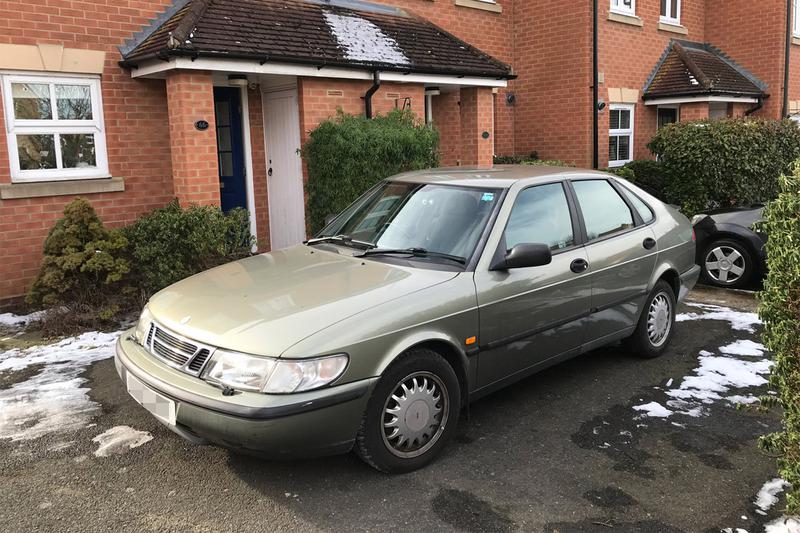More than two dozen cars that we’ve tested – including the popular Nissan Micra and Renault Megane – offer drivers a limited view of the road around them.
We’ve uncovered 27 new and used cars still available to buy that received only two stars out of five for visibility in our tests, including popular models from mainstream brands Ford, Mercedes-Benz and Nissan, plus SUVs and people carriers you’d expect would have space to give the driver a good view.
Read on to find out which cars you should avoid buying to have a clearer view of the road and which you should buy instead.
When you’re choosing a car, good visibility is only part of the picture. Find out which cars offer the best all-round performance, reliability and fuel economy in our expert analysis of the top cars for 2020.
Why good visibility matters
Simply put, a car that impedes how much you can see will make it more difficult to drive.
If you’re buying a low-slung sports car, you’ll probably be more willing to accept the trade-off of poor visibility for streamlined performance. Of course, with a sports car you’ll likely also have to sacrifice fuel economy, having a usable boot, head space and rear seats.
But for the rest of us, while poor visibility in a car is not necessarily a deal breaker, a vehicle that doesn’t restrict what you need to see makes it that much easier to live with.
A combination of the car’s shape, bodywork, mirrors, driving position and window size can combine to make your life difficult, and ever more dependent on parking sensors and cameras.
Parking your car or swinging it round in a three-point-turn will be made much more difficult if you can’t properly judge the front or rear end of your car, are unable to spot low sitting objects or just can’t see very well out of the rear window. The latter is actually quite common in modern cars, even among cars with otherwise decent all-round visibility.
Thick window pillars (between each window and surrounding the front and rear windscreen) can also get in the way when you’re trying to pull out of a junction or when changing lane on a motorway. It won’t just increase the effort of driving the car, but could raise your stress levels too.
While robust bodywork is important to protect occupants in a crash, car manufacturers need to strike the right balance between this and being able to see out clearly.
From our tests, we’ve highlighted some cars with limitations on how well you can see out. We’ve also suggested alternatives for each that get four stars for visibility.
Read on for more, or use the links below to jump straight to:
To find out how good the visibility is on any car you’re considering buying, head over to ournew and used car reviews, and click on the Test Results tab in the review for the star rating.
Poor visibility new cars
Below, we feature some of the worst offenders – new cars that only get a two-star visibility rating in our tests.
Driver-assist technologies, such as parking cameras, are useful where available, but they shouldn’t be a substitute for giving the driver a good direct view of the road. If you choose a car with poor-rated visibility in our tests, check what visibility assist technologies are on offer as standard or as optional extras.
The black gloss paint on the Nissan Micra’s rear pillars goes some way to disguise how thick they are from the outside. But once you’re sitting in the driver’s seat, your mirrors will expose an almost visor-like rear view of the road.
If you’re looking for a small car with good visibility, take a look at our alternative: the Volkswagen Polo GTI.
For help manoeuvring, parking aids are available on the Nissan Micra, including a rear view camera and rear parking sensors – but only on higher-spec models.
Does the Nissan Micra make up for poor visibility in other areas? Find out, in our full Nissan Micra review.
The trend for increasingly stylish looks can come with compromises, as evident on the letterbox-like rear window on the latest version of the Renault Megane. High rear-seat headrests obscure the already limited view still further.
The Ford Focus could be a better bet if visibility is a high priority – read our summary below.
Rear parking sensors come as standard on all but the entry-level Megane, and most mid and upper-spec trims also fit a rear camera. This isn’t a substitute for better all-round visibility, though.
The Renault Megane is a stylish rival to popular hatchbacks, such as the Ford Focus and Vauxhall Astra, but does its driving performance make up for poor visibility?
Find out in our full Renault Megane review.
Poor visibility mid-size crossover: Mercedes-Benz GLC Coupé (2016-), £40,786*
Coupé-style rooflines that taper towards the rear of the car are becoming increasingly popular among crossovers and SUVs.
You probably wouldn’t expect a coupé to have exceptional visibility, but on the mid-size Mercedes-Benz GLC Coupé it’s particularly poor. Its sweeping roofline leaves space for windows at a premium in the rear of the car, with the result being a compromised view.
If you want a good all-round view of the road, the Audi Q5 could be a better alternative.
The GLC Coupé includes a reversing camera and Active Park Assist (which identifies a suitable parking space for you) as standard. But parking aids should be an assist, not a lifeline. Should they fail, would you be comfortable parking this car without them?
Discover what our car experts thought in our Mercedes GLC Coupé review.
Reversing around a corner in the current Dacia Duster, which anyone taking their driving test before December 2017 may have been tested on, would be particularly tricky. The thick pillars towards the rear risk obscuring hazards behind the car.

If you’re looking for a small SUV with better visibility, read our summary of the Fiat 500X to see if it would meet your needs.
Rear parking sensors and a colour rear-view camera are a benefit, although not a substitute for good direct visibility – but they only come as standard on higher-spec models.
That said, the Dacia Duster is the cheapest SUV available to buy new. But does the price and its overall performance justify the visibility compromise?
Find out in our Dacia Duster review.
Arguably, the need for good all-round visibility is greatest in the city where you’re likely to be navigating around bikes and pedestrians. However, rear visibility from the Smart EQ Fortwo leaves much to be desired.
Cars tested at our lab are right-hand drive versions; the image below, from the driver’s position, is a mirror image of what a driver in the UK would see. Fortunately, rear parking sensors come as standard even for the entry-level model and you may end up relying on them when parking.
Nevertheless, the all-electric Smart EQ Fortwo may still have what it takes to make the shortlist of someone who mostly makes short trips. Its tiny size and maneuverability make it ideal for navigating obstacles and narrow city streets.
But what is its electric driving range in real life and can it handle longer distance journeys? Read our Smart EQ Fortwo review to find out.
Unfortunately, no city cars that you can buy new achieved four-star visibility or better in our tests. But a previous generation Smart Fortwo has a much better four-star visibility – see whether it’s worth going for the older model instead by reading our Smart Fortwo (2007-2014) review.
Good visibility cars to consider instead
The good news is that we’ve tested far more cars with good visibility than bad – more than 200 of the new and used cars we’ve tested achieved four out of five stars for visibility. This includes mainstream favourites, such as the latest-generation Volvo XC60 and Skoda Karoq.
Below, we’ve suggested some alternatives to the poor-visibility cars we’ve highlighted above – all of which get four stars for visibility.
Remember, though, that good visibility alone does not make a great car. A car needs to pass our independent tests with flying colours to be awarded a Which? Best Buy. And we’ve even found cars with four-star visibility that are so disappointing in other areas that we’ve made them Don’t Buy.
Find out the results from our whole range of tests including visibility, reliability, fuel economy, emissions and much more by heading over to our full list ofnew and used car reviews.
Not many small cars have good enough all-round visibility to achieve a four-star rating in our tests, but the range-topping GTI version of the Volkwagen Polo combines good visibility with the promise of high performance.
It’s powered exclusively by a 2.0-litre turbocharged petrol engine, which generates 200hp, and has a six-speed twin-clutch automatic transmission. It has the most tech as standard of all cars in the Polo range, including an 8-inch colour touchscreen media system with DAB digital radio, sat nav and Bluetooth connectivity.
Did its performance live up to expectations when we put it through its paces? Our Volkswagen Polo GTI review tells you all you need to know.
The Ford Focus is one of the most popular cars on UK roads and it certainly offers good visibility, with no major obstructions to the driver’s all-round view.
There are no less than nine trim levels to choose from, with plenty of safety kit as standard, including autonomous emergency braking. This greatly reduces the likelihood of having a low-speed collision.
But is this longstanding favourite one of the best cars available to buy? Our experts reveal all in the full Ford Focus review.
The Audi Q5 may not quite hit the full-blown coupé criteria, but it offers a better-visibility alternative to the Mercedes-Benz GLC Coupé, and has a similar blend of sweeping roofline and mid-size SUV looks. It aims to be the ideal mix of luxury and practical features, with four-wheel drive as standard and a hi-tech cabin.
Our tests put it through its paces. Find out how it fared in our Audi Q5 review.
Windows don’t have to be huge to offer good visibility, they just have to be positioned well. The Fiat 500X is a prime example of this – it’s proof that there’s no reason a small car shouldn’t give the driver a decent view of the road.
There are three petrol and two diesel units to choose from, and the car comes in a range of trims.
But is this the small SUV that balances visibility with overall driving performance? Our experts give the answers in the Fiat 500X review.
Full list: Poor-visibility new and used cars to avoid
Below, we’ve listed the 27 cars we’ve tested that have received only two stars out of five for visibility; we haven’t (yet) given any car only one star for visibility.
The list includes new cars from heavyweight brands, including the Ford Ecosport, plus large MPVs such as the Citroen SpaceTourer. Don’t make the mistake of thinking lots of interior space automatically means better driver visibility.
If you’d like a car with good visibility, avoid the models in the list below
| Brand | Model | Car class |
| Chevrolet | Camaro (2015-2018) | Sports |
| Chevrolet | Cruze (2009-2015) | Medium |
| Chevrolet | Orlando (2011-2015) | MPV |
| Citroen | Dispatch Combi Jumpy (2007-2015) | MPV |
| Citroen | SpaceTourer (2016-) | MPV |
| Dacia | Duster (2018-) | Compact/small SUV |
| Dacia | Duster (2013-2018) | Compact/small SUV |
| Dacia | Sandero (2013-) | Small |
| Ford | Ecosport (2014-) | Compact/small SUV |
| Ford | Ka+ (2016-2019) | City |
| Ford | KA+ Active (2018-2019) | City |
| Honda | Civic (2006-2011) | Medium |
| Honda | CR-Z (2010-2013) | Medium |
| Jeep | Wrangler (2007-2018) | Medium/large SUV |
| Kia | Rio (2005-2011) | Small |
| Mercedes-Benz | GLC Coupe (2016-) | Medium/large SUV |
| Nissan | 370Z (2009-) | Sports |
| Nissan | Micra (2017-) | Small |
| Renault | Fluence (2012-2013) | Medium |
| Renault | Megane (2016-) | Medium |
| Renault | Mégane Coupé (2009-2016) | Medium |
| Renault | Wind (2010-2012) | Small |
| Smart | EQ Fortwo (2018-) | City |
| Smart | Fortwo Cabriolet (2016-2019) | City |
| Toyota | iQ (2008-2014) | City |
| Vauxhall | Vivaro Life (2019-) | MPV |
| Volkswagen | Jetta (2006-2011) | Medium |
How we test car visibility
At a glance, it’s not always obvious whether a car will give you the visibility you need when you’re driving. This is where our tests come in.
Our tests scrutinise a wide range of factors that affect visibility, including all-round visibility, how well obstacles can be seen out of windows and in mirrors, the quality of headlights and driver-assist technologies, such as parking cameras.
We don’t judge all-round visibility subjectively. Instead, we take a measurement using a rotating camera to get a 360-degree view from the driver’s perspective, following the driver’s eye line around the car. We then analyse how many objects (headrests, window pillars, etc) interrupt the driver’s line of sight and how severely.
Cars tested at the lab are right-hand drive versions, so images from the driver’s position are a mirror image of what a driver in the UK would see.
You can see in the first of our lab’s 360-degree images how a typical driver of the Fiat 500X compact SUV has a good all-round view, although even here, the rear pillars are reasonably big.
The 360-view image below taken at the lab of the Mercedes-Benz GLC Coupé, on the other hand, shows how obstructed the driver’s view is around the car. As you can see, there are large obstructions of the driver’s view across the rear of the car.
In the images above, obstructions to the driver’s all-round field of vision are colour coded depending on what the obstruction is and how severely it interrupts the driver’s eyeline. Yellow, dark blue and pink are used to highlight the restricted parts of the driver’s view.
Rearward viability is particularly important, so the rear windshield is split into two.
Any light blue sections measure narrow windows. They are positive rather than negative, and improve the ratings for the adjacent pillars (coloured in yellow and pink), as small windows such as this aid visibility, albeit by a limited amount.
A car is one of the most important and expensive purchases many of us will make. Our expert car reviews scrutinise driving performance, running costs and comfort alongside visibility to give you the full picture on whether a car is worth your money.
*New car prices are based on what people pay, sourced from 500 different franchised dealers each month, sorted by region, to provide accurate real-world data. It covers all major manufacturers and is representative of on-sale models per manufacturer.




